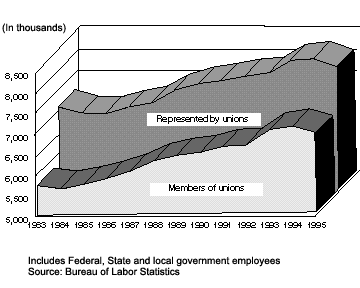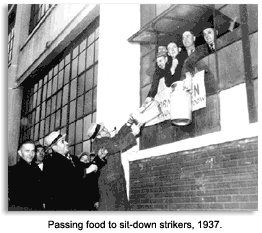Collective bargaining by unions faced general hostility in the courts, which at first considered such practices to be anti-competitive and illegal. As unions gained legal acceptance, their contracts began to assert greater union influence over hiring and added requirements for union membership. Following World War II, a backlash developed that resulted in the Taft-Hartley Act, which banned certain practices.
The most extreme form of union control is the "closed shop," in which only members of a union can be hired. Sometimes, when a new or replacement worker is needed, the union supplies the new employee. A strike for a closed shop became legal when the Massachusetts Commonwealth's chief justice, Lemuel Shaw, ruled in the case of Commonwealth v. Hunt (1842). Shaw also ruled that a trade union was lawful, and its members were not collectively responsible for the illegal acts committed by individuals. A "closed shop" became illegal in the United States with the passage of the Taft-Hartley Act of 1947.
 A closely allied term is the "union shop." Under that arrangement, union membership is not required for employment, but a new employee must join the union within a specified period of time.
By midsummer 1937, membership grew to an estimated 4,000,000 in the Congress of Industrial Organizations (C.I.O). Under the dynamic leadership of John L. Lewis of the United Mine Workers (U.M.W.), the C.I.O led strikes for: the closed shop, the C.I.O.'s right to be the exclusive agent for workers in collective bargaining, and the use of the new sit-down strike tactic. In a sit-down strike, workers take possession of a premises and then refuse to leave until demands are met. In March 1937, General Motors and Republican Steel contested the new sit-down's legality, calling for the Michigan courts to rescue their properties by ordering injunctions against sit-down protesters.
Those actions caused a further rise in tension between the workers and factory owners, until Governor Frank Murphy's intervention successfully prevented widespread violence in the automobile industries.
A closely allied term is the "union shop." Under that arrangement, union membership is not required for employment, but a new employee must join the union within a specified period of time.
By midsummer 1937, membership grew to an estimated 4,000,000 in the Congress of Industrial Organizations (C.I.O). Under the dynamic leadership of John L. Lewis of the United Mine Workers (U.M.W.), the C.I.O led strikes for: the closed shop, the C.I.O.'s right to be the exclusive agent for workers in collective bargaining, and the use of the new sit-down strike tactic. In a sit-down strike, workers take possession of a premises and then refuse to leave until demands are met. In March 1937, General Motors and Republican Steel contested the new sit-down's legality, calling for the Michigan courts to rescue their properties by ordering injunctions against sit-down protesters.
Those actions caused a further rise in tension between the workers and factory owners, until Governor Frank Murphy's intervention successfully prevented widespread violence in the automobile industries.
 In response to the C.I.O. strikes, Congress passed the Fair Labor Standards Act (1938), with the objective of the “elimination of labor conditions detrimental to the maintenance of the minimum standards of living necessary for health, efficiency and well-being of workers.”
Restrictions on union shops were created by the Taft-Hartley Act, but the provisions have been weakened by subsequent legislation. Anti-union groups have persuaded many state legislatures to enact "Right to Work" laws at the state level that prohibit union shops. Those laws do not apply to such industries as airlines and railways.
The argument for a union shop is that all employees will receive greater benefits from collective bargaining performed by a union than would an individual employee. The employees should contribute financially to support the collective bargaining process because they benefit from it. On the other hand, the "right to work" argument is primarily motivated by a concern for individual freedom to decide whether or not to support unions by paying dues. Obviously, without monetary support from employees through compulsory union dues, the unions would suffer.
In response to the C.I.O. strikes, Congress passed the Fair Labor Standards Act (1938), with the objective of the “elimination of labor conditions detrimental to the maintenance of the minimum standards of living necessary for health, efficiency and well-being of workers.”
Restrictions on union shops were created by the Taft-Hartley Act, but the provisions have been weakened by subsequent legislation. Anti-union groups have persuaded many state legislatures to enact "Right to Work" laws at the state level that prohibit union shops. Those laws do not apply to such industries as airlines and railways.
The argument for a union shop is that all employees will receive greater benefits from collective bargaining performed by a union than would an individual employee. The employees should contribute financially to support the collective bargaining process because they benefit from it. On the other hand, the "right to work" argument is primarily motivated by a concern for individual freedom to decide whether or not to support unions by paying dues. Obviously, without monetary support from employees through compulsory union dues, the unions would suffer.